Why Data Consolidation is Important to Your Organization?
These days, where data volumes are increasing and new data sources are constantly emerging, the significance of data consolidation cannot be overstated. In any successful data migration strategy, it is a critical component to ensure data integrity, accessibility, and efficiency. However, this crucial task presents a daunting challenge for many IT teams, tasked with integrating disparate data sets into a cohesive, manageable system. Transforming a scattered data landscape into a streamlined, organized repository requires a strategic and thoughtful approach. Mastering the process of data consolidation is essential for guiding organizations away from information overload chaos towards a state of clarity and control. This process is crucial for ensuring that data is not only accessible and manageable but also maintains its integrity and value.

The Challenge of Data Consolidation
Consolidating data is an essential but challenging process for businesses aiming to unify data sources for better decision-making and streamlined operations. As a result, there are some challenges businesses should expect when they embark on this process.
First, data consolidation can only be successful if the data being consolidated is accurate and reliable. Look for data inconsistency, where different data sources may have conflicting or redundant information, like mismatched formats, varying data quality, and outdated information. This could lead to misleading insights, causing you to adopt strategies or tactics that are ineffective or even detrimental. For example, duplicate customer records might lead to overestimating market penetration, resulting in overproduction. Old customer addresses in various systems may lead to missed deliveries. Even more seriously in healthcare, redundant information increases the likelihood of outdated patient information and misdiagnoses.
Strategies for Effective Data Consolidation
How to Audit, Clean, De-duplicate, and Categorize Data Effectively
To ensure successful data consolidation during a migration project, following a set of best practices is crucial. These practices revolve around data auditing, cleaning, de-duplication, and categorization, and they lay the groundwork for a smooth transition to new systems, such as those facilitated by Tzunami’s solutions for SharePoint and other platforms. Here’s a detailed look at each step, along with the tools and strategies that can aid in the process:
Data Auditing
We recommend you understand the current data landscape by identifying what data exists, where it resides, its format, and how it’s used.
Process: Utilize data discovery tools to map out data sources and types. This step is essential for identifying redundant, obsolete, or trivial (ROT) data that can be cleaned up before migration. you will know what’s relevant and important, and understand your information architecture, data size, customizations, and workflows that may impact your project to avoid potential risks and improve migration project planning. If you wish to conduct a deeper analysis, you may export the data to CSV.
Tools: Data auditing tools vary widely, with options like Tableau for data visualization or SQL queries for databases to manually audit and report on data. For SharePoint migrations, Tzunami Deployer provides functionalities to analyze your data before migration. you will understand what’s relevant and important, understand your information architecture, data size, and more.
De-duplication
De-duplication is crucial because it eliminates redundant copies of data, ensuring that only unique items are stored. This process significantly reduces storage requirements and costs while improving data management efficiency. Furthermore, de-duplication enhances data quality and accuracy, facilitating better decision-making and analytics.
Process: Identify duplicate data using specific criteria (e.g., name, address, or ID numbers) and then merge or delete duplicates based on rules that prioritize the most complete or recent records.
Tools: Many database management systems include built-in de-duplication functions. Additionally, specialized software like Dedupe.io can assist with larger datasets.
Categorization
Categorization is crucial because it streamlines the organization of information, making it more accessible and easier to analyze. By grouping similar data together, it reduces complexity and enhances the efficiency of data retrieval and processing. This systematic approach also ensures consistency and accuracy in data analysis, supporting informed decision-making.
Process: Define a taxonomy or classification scheme that reflects the business’s needs and apply it across the dataset, tagging and categorizing data accordingly.
Tools: Data categorization can often be accomplished with the help of content management systems (CMS) or document management systems (DMS) that support tagging and categorization. Tzunami Deployer allows for mapping properties and metadata during migration, which can help in categorizing data in the target system.
Pre-Migration Considerations
Microsoft SharePoint has established some limits for various parameters such as URL length, capacity per site collection, file size limits, and file names with invalid end strings. Ensure that you are aware of any imminent problems before migrating your data to SharePoint.
Process: scans your source system and provides five types of pre-migration reports: general report, Files report, File extensions, Dara Items, and Problematic Items.
Tools: Tzunami Deployer’s Sharepoint migration tool offers a thorough pre-migration analysis and report, which is essential to foresee different issues
Migrations of SharePoint require a significant amount of effort and can take several hours, sometimes even days to complete. You should have a pre-migration tool to avoid any surprises… and headaches!
After-Migration
Another feature that we recommend using to be in control of your organization’s data is Delta Migration.
What Is Delta Migration?
Delta migration solution allows migrating only the newest data into your target system, for example, delta Docushare content into Office 365.
In almost every migration process, end users are making changes until the new environment goes live. In case you made a copy, the source system is running live or you make changes to the workflow in the copy, Tzunami Deployer’s Delta SharePoint tool is the perfect solution for you.
In conclusion, navigating the intricacies of data consolidation during migration is not just a technical challenge; it’s a strategic imperative that underscores the importance of maintaining data integrity, accessibility, and value across organizational processes. By adhering to best practices in data auditing, de-duplication, categorization, and leveraging pre-migration analyses and delta migration techniques, organizations can effectively manage the transition from a fragmented to a unified data ecosystem. Tools like Tzunami Deployer play a pivotal role in simplifying this journey, providing a structured approach to data migration that aligns with the evolving needs of businesses. As companies continue to grapple with the rapid expansion of data, the ability to consolidate and manage this asset effectively will remain a key differentiator in achieving operational excellence and sustaining competitive advantage. Through careful planning, execution, and the right technological support, the path from data chaos to clarity becomes not only achievable but a critical step in harnessing the full potential of digital transformation.










